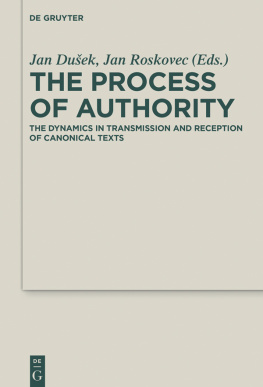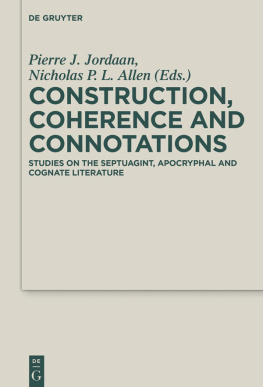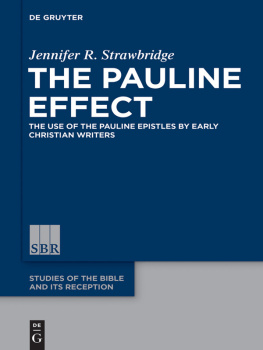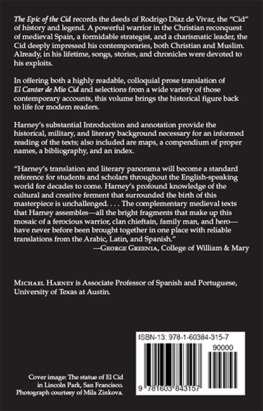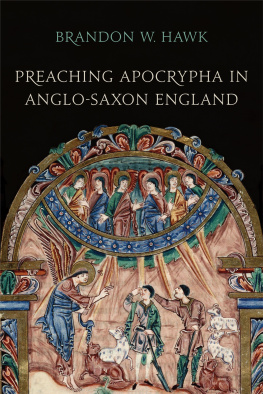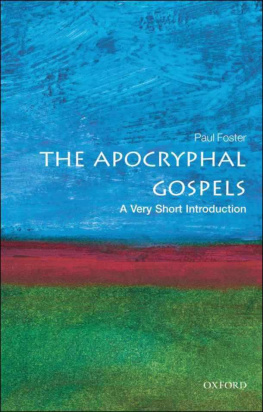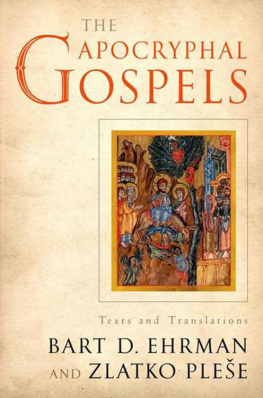

Wm. B. Eerdmans Publishing Co.
2140 Oak Industrial Drive N.E., Grand Rapids, Michigan 49505
www.eerdmans.com
2016 Tony Burke and Brent Landau All rights reserved
Published 2016
Printed in the United States of America 22 21 20 2 3 4 5 6 7
ISBN 978-0-80287289-0
Library of Congress Cataloging-in-Publication Data
Names: Burke, Tony, 1968 editor. | Landau, Brent, editor.
Title: New Testament apocrypha : more noncanonical scriptures / edited by Tony Burke, Brent Landau.
Other titles: Bible. Apocrypha. English. 2016.
Description: Grand Rapids, Michigan : William B. Eerdmans Publishing Company, 2016 | Includes bibliographical references and index.
Identifiers: LCCN 2016009263 | ISBN 9780802872890 (hardback : vol. 1) Subjects: LCSH: Apocryphal books (New Testament) Classification: LCC BS1692 2016 | DDC 229/.92052dc23 LC record available at https://lccn.loc.gov/2016009263
Biblical citations in this volume follow the New Revised Standard Version unless otherwise noted.
Dedicated to
Montague Rhodes James and James Keith Elliott,
editors and translators of The Apocryphal New Testament (1924 and 1993)
Contents
Foreword: The Endurance of the Christian Apocrypha
J. K. Elliott
The Legend of Aphroditianus
Katharina Heyden
The Revelation of the Magi
Brent Landau
The Hospitality of Dysmas
Mark Glen Bilby
The Infancy Gospel of Thomas (Syriac)
Tony Burke
On the Priesthood of Jesus
William Adler
Papyrus Oxyrhynchus 210
Brent Landau and Stanley E. Porter
Papyrus Oxyrhynchus 5072
Ross P. Ponder
The Dialogue of the Paralytic with Christ
Bradley N. Rice
The Toledot Yeshu (Aramaic Fragment)
F. Stanley Jones
The Berlin-Strasbourg Apocryphon
Alin Suciu
The Discourse of the Savior and the Dance of the Savior
Paul C. Dilley
An Encomium on Mary Magdalene
Christine Luckritz Marquis
An Encomium on John the Baptist
Philip L. Tite
The Life and Martyrdom of John the Baptist
Andrew Bernhard
The Life of John the Baptist by Serapion
Slavomr pl
The Legend of the Thirty Pieces of Silver
Tony Burke and Slavomr pl
The Death of Judas according to Papias
Geoffrey S. Smith
The Acts of Barnabas
Glenn E. Snyder
The Acts of Cornelius the Centurion
Tony Burke and Witold Witakowski
John and the Robber
Rick Brannan
The History of Simon Cephas, the Chief of the Apostles
F. Stanley Jones
The Acts of Timothy
Cavan W. Concannon
The Acts of Titus
Richard I. Pervo
The Life and Conduct of the Holy Women Xanthippe, Polyxena, and Rebecca
David L. Eastman
The Epistle of Christ from Heaven
Calogero A. Miceli
The Epistle of Pseudo-Dionysius the Areopagite to Timothy concerning the Deaths of the Apostles Peter and Paul
David L. Eastman
The (Latin) Revelation of John about Antichrist
Charles D. Wright
The Apocalypse of the Virgin
Stephen J. Shoemaker
The Tiburtine Sibyl
Stephen J. Shoemaker
The Investiture of Abbaton, the Angel of Death
Alin Suciu with Ibrahim Saweros
Foreword: The Endurance of the Christian Apocrypha
Of making many books there is no end in Ecclesiastes 12:12 may be a fair judgment about the seemingly interminable stream of writings concerned with the events and personages of the New Testament commonly gathered together under the umbrella title The Christian Apocrypha. The King James Version of the rest of that verse, and much study is a weariness of the flesh, however, may be sensibly glossed over as an inappropriate sentiment to cite in this scholarly book.
Defining New Testament Apocrypha
The so-called apocryphal writings are an amorphous and flexible collection of writings that do not constitute an agreed or settled entity, nor are they a body of literature from a defined timeframe. There is no agreed set number of books as there is in the so-called Old Testament Apocrypha, usually printed separately in many Protestant Bibles. Such an enormous, yet unspecified, number of such texts is the reason why more Christian apocrypha need to be published.
The titles given to collections may vary. All the words in the title The Apocryphal New Testament are wrong, and Early Noncanonical Christian Literature, although preferred by many academics, is not precise or ideal. We study not only early texts, not all of them are Christian (one in the current collection here is Jewish in origin), and noncanonical in such a title is as anachronistic as apocryphal (in the literal sense). At least New Testament Apocrypha is a well-known, if less than perfect, title, which most readers and prospective readers recognize; they know the sorts of writings that may be found in a book with this name on its spine.
Early Christian Apocrypha Collections
Some apocryphal Christian texts have been known for centuries and are among the earliest books printed. The Arabic Infancy Gospel was first printed in 1697 and the Protevangelium of James in 1552. The Infancy Gospel of Thomas and the History of Joseph the Carpenter were published in the eighteenth century. A Latin version of the Acts of Timothy, included here, was published in Leuven in 1485 and later revised by the Bollandists in 1643.
Printed collections containing, admittedly, only a limited number of apocryphal texts, as commonly designated, can be traced to the volumes edited by Fabricius (1719), Jones (17261727), Birch (1804), Thilo (1832), or Giles (1852). Modern translations of some of these texts into Western languages have been edited over the past century by Walker, Cowper, Vouaux, Amiot, de Santos Otero, and others. A strange but very popular collection containing not only conventional apocryphal texts but some of the Apostolic Fathers was edited by William Hone in 1820 and went through many editions; the editor is now rightly criticized for peddling the false belief that the apocryphal writings were deliberately and wilfully excluded from the canon by its compilers.
Modern Christian Apocrypha Collections
Those of us who have had the privilege, and problem, of making a meaningful, representative, and manageable selection of the New Testament apocryphal texts have an embarras de richesses to work with. When I was asked in the late 1980s to revise M. R. Jamess classic collection The Apocryphal New Testament, first published in 1924, Oxford University Press gave me carte blanche over what to include. For the most part I obviously followed Jamess lead, but I added texts unknown in his day and expanded or changed others where newer or better manuscripts had been published. In the end there was no trouble filling a volume of roughly 700 pages with what I judged to be the most important and influential apocryphal texts, although not necessarily including only the oldest such writings. I made reference to the many subordinate and secondary apocryphal acts such as the Acts of John in the City of Rome or the
Next page

